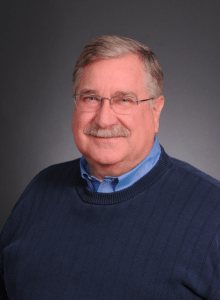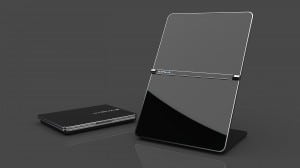Kymeta Charts Path to Product Development After Successful Testing of Metamaterials-Based Antenna
[Via Satellite 12-17-13] Kymeta has competed a major demonstration test of its flat-panel antenna. The company was able to complete a bi-directional Skype call via Telesat’s Anik F2 satellite, displaying the antenna’s ability to provide Ka-band high-speed Internet capability. Using iDirect modems, Kymeta completed the test with better results than simulations anticipated.
With this successful demonstration in Canada, Kymeta is now preparing to repeat the test in the United States. Regulatory procedures slowed down the process, which is why the company, based in Redmond, Wash., chose to go with Telesat Canada to complete the first round of testing.
“We had to go through the full process of evaluating and characterizing the antenna in the anechoic chamber and provide that test information to both the CRTC in Canada as well as the FCC in the United States,” Vern Fotheringham, chairman and CEO of Kymeta told Via Satellite. “Canada was quicker on the trigger to provide approval for us to do the testing, so with Telesat Canada we went up to Vancouver and utilized Anik F2 on their West Coast beam to do the initial testing, which was completed last Tuesday.”
Initially more testing was done on the receiving side, because there were fewer regulatory hurdles to cross. Kymeta spent time focusing on design and performance rates for apertures. Ka-band testing at 20GHz was competed in April. This paved the way for last week’s bolder test.
“That information was fed into a development program for the transmit side, in this case in the 30GHz for Ka-band, which required us to both obtain satellite transponder capacity and also a satellite system operator,” said Fotheringham. “[We needed someone who would] work with us under experimental licenses to allow us to put up the antenna, [while] always running the risk of new technology. How did they know we wouldn’t interfere with an adjacent satellite inadvertently when we turned it on?”
Fortunately for Kymeta (and Telesat), testing went well and did not interfere with other satellites. Now, over the coming weeks, the company plans to do a repeat of the test domestically, using the same satellite. Kymeta received approval from the FCC the day before its test in Vancouver.
“We won’t learn anything technically, but we will be able to demonstrate for our investors and customers the functionality of the antenna, show the tight beam pattern and the fact that it’s very high performing,” Fotheringham added. He expects the antenna to have a big impact on the satellite communications industry. “I think we’re going to be helping the satellite industry recapture its momentum and some of the lost market share that has been cannibalized and sequestered in the cellular and broadband terrestrial wireless industry for the past couple of decades,” he said.
Building off the confidence that these tests established, Fotheringham detailed more of Kymeta’s plans for the next few years.
“During the mid-year through June, July and August, we look to begin actual field tests and demonstrations with satellite system operators and customers who are signing up to work with us as initial anchor customers, and go to market partners over the first few months of the year,” he said. “Toward Q4 of next year we will begin the finalization of the first broadband mobile version, which is the aeronautical contract we’ve been executing for Inmarsat.”
The Inmarsat contract will allow Kymeta to test its antennas while mounted on an aircraft. The company will check performance, fast beam steering and antenna operations in a high-speed mobile environment.
“In 2015 and 2016 the push is to get into production and commercial sales of our initial products, the Comms-on-the-Pause and Comms-on-the-Move high end product solutions and aeronautical maritime and terrestrial solutions,” continued Fotheringham. “In parallel with that, the research and development activity switches to the next generation of meta-material antennas that we’re developing. This will enable us then to penetrate the broader mass market for consumer electronics price solutions that are in the realm of mass market appetite for mobile and personal portable broadband satellite devices.”
Kymeta anticipates the majority of its customers will come from the consumer market. The company plans to target both fixed and mobile DTH services.
“We definitely will sell our products to niche markets, and to mass markets also for that matter, but we are also standing here ready, willing and able to sell components, subsystems and ultimately even licensing our technology to companies that would like to work with us to enhance their own service and product offerings,” said Fotheringham.
Ultimately, Fotheringham feels the largest impact Kymeta’s antenna products will have is on the connected car. Millions of people access services such as Google Traffic or Waves to pinpoint — and hopefully avoid — traffic on their way to and from work. This requires large numbers of unicast Internet sessions from 3G and 4G enabled devices.
“That’s an incredibly cumbersome, incredibly inefficient mechanism,” he explained. “It is not particularly scalable, nor is it particularly friendly, especially when you see that the mass consumption of video and Internet through unicast products is starting to really pinch the first and last mile access networks. We think we’ll find an innovative marketplace that gives us the proverbial unfair advantage as far as opening up some very expansive new markets: to add a broadcast market to the Internet if you will. Historically it’s been a unicast Internet only. We think we have a significant contribution to make to improve the efficiency of bit delivery to a wide array of the consuming public as well as government and commercial applications.”

